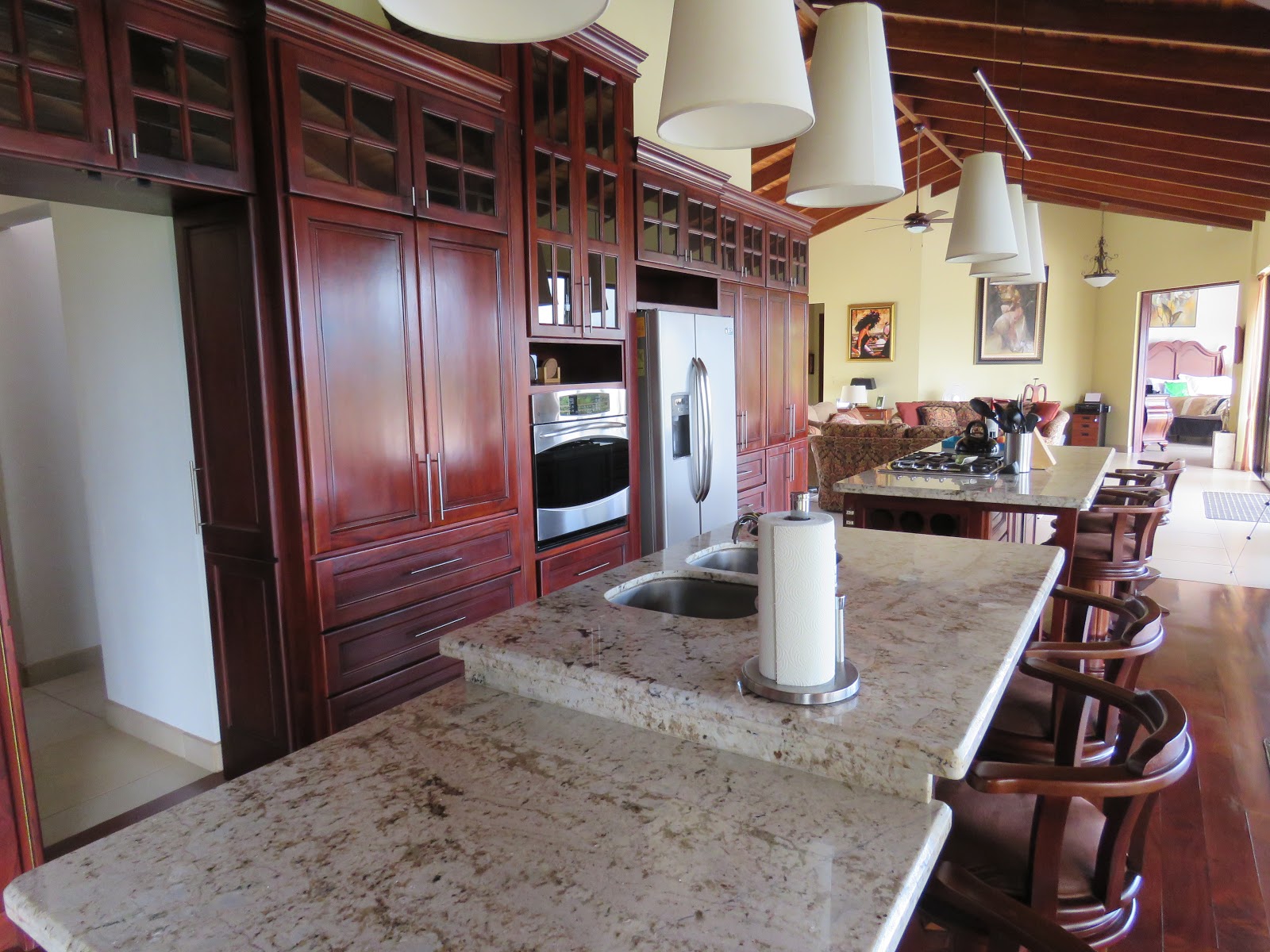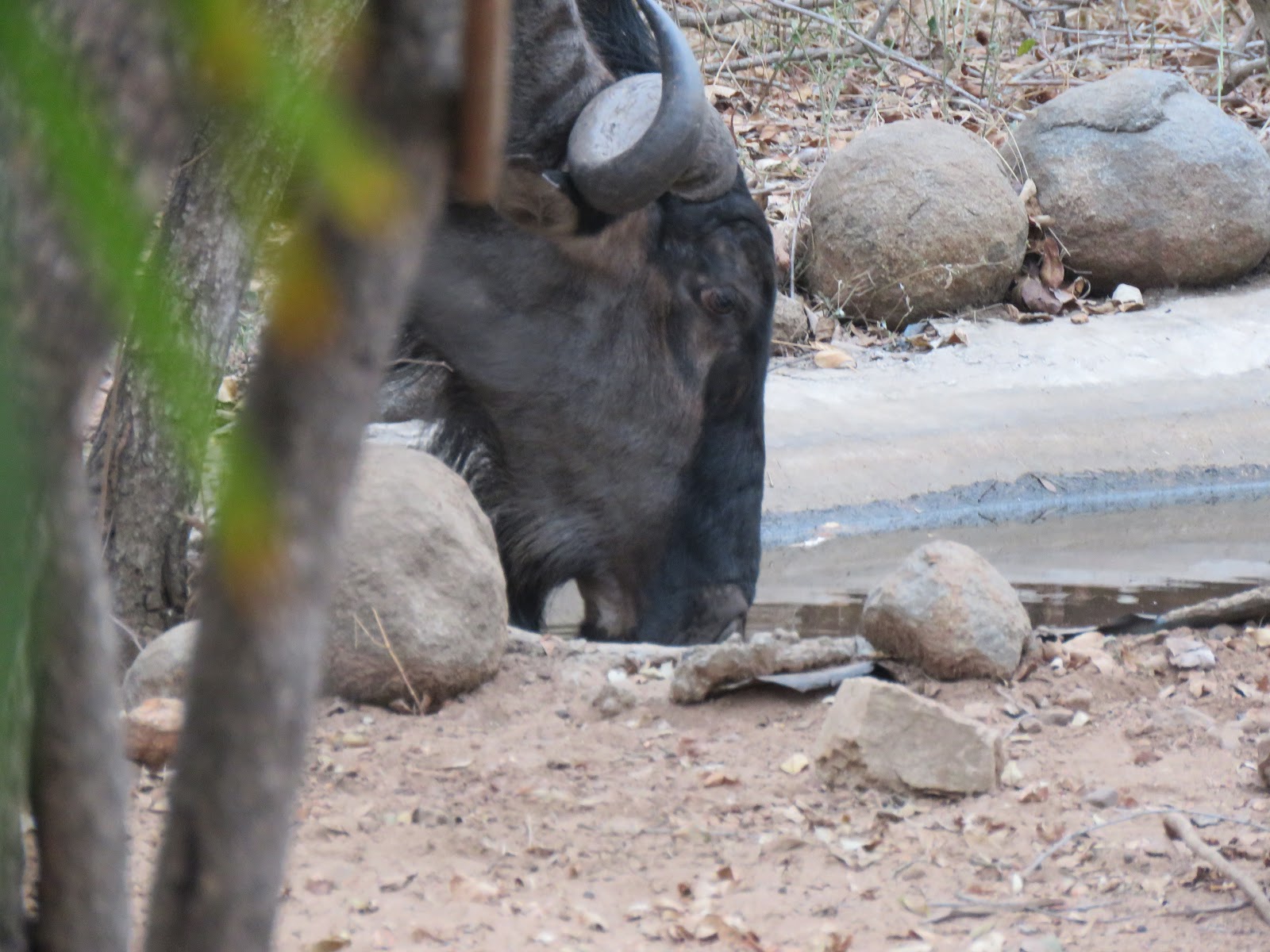 |
| A lone giraffe in the bush. |
“Sighting of the Day in the Bush”
 |
| A croc was making an appearance in the river. From this site: “Crocodiles can submerge and remain underwater for a variety of reasons. In most voluntary dives, crocodiles stay underwater for between 10 to 15 minutes. If the crocodile tries to hide from a threat, dive length may be longer, up to 30 minutes or more. Most crocodiles can remain underwater for up to 2 hours if pressed.” |
Our world travels aren’t always about “us.” As we meet and engage with the locals, we often find opportunities to “do good works” for those in need. It isn’t always about handing over money, although when circumstances are correct, we do.
At times, it’s about doing something special for an individual and their family. At other times, it’s about generosity and kindness in varying forms and degrees. We choose not to write about these occasions. Doing so would merely be in an attempt to gain recognition or accolades for “doing good works.”
 |
| What a lovely scene on the Crocodile River, as seen from Marloth Park. |
When wealthy celebrities donate money to various situations and causes, there are many forms of media covering the exchange to make the donor “look good” and enhance their public image.
No doubt, it’s done with good intentions to provide funds and foundations for many causes, disaster relief, and poverty. But, strip away the ability to do it anonymously, and one wonders among them would still contribute.
 |
| This elephant climbed the big rocks for a better view. |
But, for the “small folks” like us with limited resources and a fixed income, we don’t have the luxury of donating the more significant share of our income. We give as we can when circumstances are right.
Long ago, when we encountered such situations that felt right for us, we decided we had no need or desire to write about them here in an attempt to “toot our own horn” or “make us look good.”
 |
| Crossing the shallow river… |
In our hearts and minds, we are at peace with the fact that our travels are not entirely about our pleasure and enrichment. It’s about somehow, in some way, giving back something of ourselves that matters to someone we meet along the way. That’s all we need.
Gee, I don’t want to sound like we’re looking for accolades for our philosophy. We’re not. We’re mentioning this as a preface to a bit of story we’re sharing today that didn’t include generosity on our part but was merely a matter of circumstance, perhaps somewhat serendipitously, more than anything.
 |
| The Crocodile River views vary depending on the banks from which we’re shooting photos. The amount of water varies from day today. |
When the screen on my still-working cellphone cracked, which wasn’t noticeable when used in a darkened room, and I’d run out of storage space with too many apps, we decided I’d get a new phone that we shared yesterday’s post here.
We decided we’d drop off the old phone at an electronics recycle facility once we reset the phone to delete all of my content. This is what we usually do with obsolete digital equipment in most countries. But, it was a shame to get rid of an otherwise well-operating smartphone.
 |
| This elephant appears almost black after being in the water. |
We decided we’d ask Martha, our housekeeper, if she could use the phone after I wiped out all my data. Keeping in mind she doesn’t speak English very well, when we showed her the phone asking if she likes it, her response was priceless. She enthusiastically hugged us both. What a coincidence! Her old phone had stopped working for calling.
Martha has a large family, and being unable to stay in touch was hard for her, as one would imagine. She lives in a tiny house on the grounds of this house and visits family on her days off. She doesn’t do Facebook, email, or any other forms of social media. She likes to make calls and play games. This we could accomplish for her.
 |
| These orange blooms on aloe bushes are commonly seen during the winter months in the bush. |
We all giggled over the irony of me buying a new phone and needing to dispose of an old phone, which ultimately meant so much to her. We didn’t do anything special other than avoiding a trip to a recycling store. It only took moments of our time to set it up for her, certainly less than we’d have spent driving to a recycling facility.
The quality of our lives is often about the little kindnesses we receive, ultimately striving to pay it forward. Kindnesses include dining at Uschi and Evan’s fabulous home in the bush last night with Evan’s mom Ester joining us, a delicious meal perfect for my way of eating with some of the best conversations in the land.
 |
| Recently on a scorching day, we spotted dozens of elephants by the river. |
Kindness means Louise and Danie were bringing us knives, a cutting board, and a food processor, and many more endless generosities they provide day after day. Kindness means the workers who came to our house to help when Martha was away, graciously greeted us each day, and did a fine job fulfilling our expectations.
 |
| A Big Daddy (kudu) crossing the road in Marloth Park. |
Kindness means our beautiful friends in Marloth Park, including Kathy and Don (and many more) who introduced us to their friends who have included us in their lives, inviting us to their homes and social events, always making us feel welcomed and special.
It goes on and on, and we are grateful for every gesture, big and small, that we are gifted with day after day and for the opportunity to bestow kindness in return.
 |
| One of our favorites, Mom and Baby Bushbuck. We place their pellets on the bottom step to keep guinea fowls away. |
As for kindness, we want to thank all of our readers for their thoughtful email messages, for continuing to “travel” on this journey with us, making every day more precious and meaningful.
May kindness come your way today and always!
Photo from one year ago today, August 11, 2017:
 |
| In the villa in Atenas, Costa Rica, the end of the kitchen island with the sinks had a stepped-down countertop with a shorter barstool. This spot was ideal for sitting and chopping, and dicing. For more photos, please click here. |

















































































































